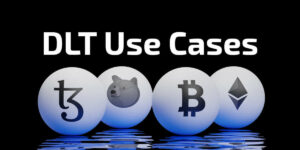
Blockchain, as a type of DLT (distributed ledger technology), is the underlying platform of Bitcoin. Before you can implement a decentralized application, make sure you understand the blockchain infrastructure requirements. You need a system, an appropriate infrastructure with enough resources, and an underlying framework.
There’s no way you’d talk about anything concerning the adoption of blockchain and not first talk about what it is, its history, how blockchain functions, and perhaps the business models that have emerged from it.
In this article, we will guide you through the needs, from software and hardware to nodes, and of course, we will also talk about PaaS providers when it comes to maintaining the infrastructure that powers your blockchain application.
- 1. Why does Blockchain need an Infrastructure?
- 2. What is Blockchain Infrastructure?
- 3. Basic Blockchain Infrastructure Requirements
- 4. Software Requirements for Blockchain
- 5. Blockchain Hardware Requirements
- 6. Blockchain Security Infrastructure
- 7. Key Takeaways on Blockchain Infrastructure
- 8. FAQs
Why does Blockchain need an Infrastructure?
The term blockchain was first described back in 1991. A group of researchers wanted to create a tool to timestamp digital documents so that they could not be backdated or changed. They created the world’s first blockchain ecosystem. If you are completely new into this, then you might consider to take free blockchain courses before you dive into its infrastructure requirements.
The blockchain technique was adopted and reinvented by Satoshi Nakamoto. In 2008, Nakamoto created the first cryptocurrency, the blockchain-based project called Bitcoin.
The blockchain is a chain of blocks that contain specific information (database), but securely and genuinely that is grouped in a network (peer-to-peer). In other words, blockchain is a combination of computers linked to each other instead of a central server, meaning that the whole network is decentralized. If you know how to build your own blockchain, then you should also understand its open-source character.
Open Source – The Foundation of the Blockchain
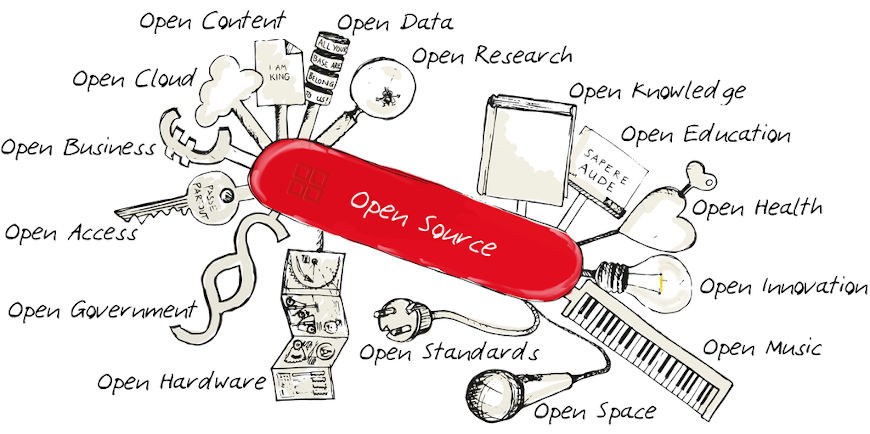
In 2008 the domain name .org was bought and an academic white paper titled Bitcoin: A Peer-to-Peer Electronic Cash System was uploaded. It set out the theory and design of a system for a digital currency free of control from any organization, central authority, or government.
The author, going by the name Satoshi Nakamoto, wrote: “The root problem with conventional currencies is all the trust that’s required to make it work. The central bank must be trusted not to debase the currency, but the history of fiat currencies is full of breaches of that trust.”
The following year the software described in the paper was finished and released publicly, launching the bitcoin network on 3 January 2009.
Nakamoto continued working on the project with various developers until 2010 when he or she withdrew from the project and left it to its own devices. The real identity of Nakamoto has never been revealed and they have not made any public statement in years.
The Importance of Open Source for Blockchain Technology
Now the software is open-source, meaning that anyone can view, use or contribute to the code for free. Many companies and organizations work to improve the software, including MIT. To make it even simpler, the blockchain concept can be compared to working on the same Google Doc simultaneously.
Bitcoin is a digital currency that operates free of any central control or the oversight of banks or governments using blockchain technology. Instead, it relies on peer-to-peer software and cryptography.
What is Blockchain Infrastructure?
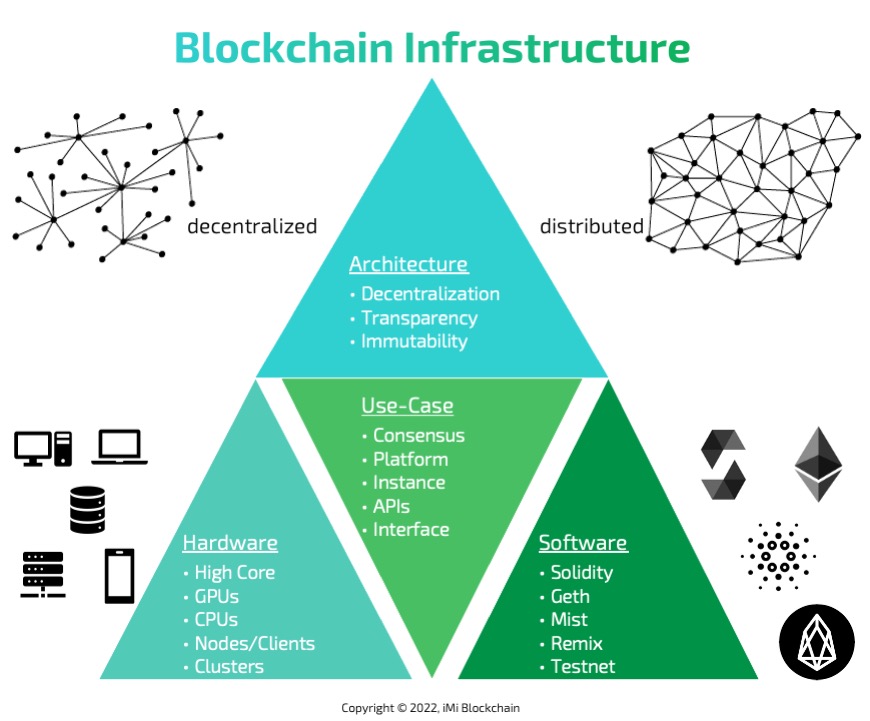
Now that we know all this, what then is blockchain infrastructure? Let’s call it blockchain design.
Blockchain infrastructure is a big part of blockchain architecture. The systems or facilities set in place for the successful operation of blockchain technology. Blockchain isn’t just about software. It’s also about hardware. System requirements for blockchain development are less critical than running a node 24/7.
To pilot your blockchain initiatives appropriately, you must have provision for your infrastructure resources to both support those initial pilots and lay the foundation to perform at scale if, and when those pilots are led to live, competitively critical production implementations.
That’s why, in addition to considering the business implications of your emerging blockchain trials, you also need to think about the implications of blockchain for your data center infrastructure.
Blockchain infrastructure platform-as-a-service (PaaS) providers coordinate and maintain access to the infrastructure that powers blockchains, such as dev tools and nodes, bundled with the underlying infrastructure needed to operate their systems, such as cloud storage and security.
The three main pillars of Blockchain Technology which have assisted it to gain extensive praise are as follow:
- Decentralization
- Transparency
- Immutability
Let’s discuss them in the aspect below.
Decentralization
Before Bitcoin and BitTorrent moved along, we were gradually used to combined supervisions. The thought is a unified unit that puts away every single piece of information and you’d need to work exclusively with this material to get whatever data you require. One more use case of a unified background is the banking system. They stock all your money, and the primary method of payment is via the bank only.
Transparency
“Straightforwardness or transparency” is among the most captivating and misinterpreted ideas in blockchain technology. A few people state that blockchain gives you safety & security – while some say that it is a straightforward or transparent technique.
A person’s personality is hidden through complex coding in Blockchain. If you manage to look into a person’s exchange narration, you won’t see “John Doe Sent 1 BTC” – rather “1MF1bhsFLkBzzz9vpFYEmvwT2TbyCt7NZJ sent 1 BTC” will be what you are going to observe. Due to this feature, though the person’s true personality is safe – you’ll still witness every interaction that was completed because of their open locality.
This element of straightforwardness has never occurred inside a financial context. From the standpoint of digital coinage, if you know the open locale of one of the banking organizations, you can just take a look at all the exchanges that they have engaged with them. This allows them to be upfront – something they have never accomplished.
Though this isn’t one of the best use-cases we have. But, this system is somewhat everyone is familiar with. We are practically convinced that a large share of these organizations won’t implement utilizing digital currencies, and irrespective of whether they do, they won’t COMPLETELY change their exchange patterns and utilize cryptographic methods of cash.
Immutability
Durability, concerning the blockchain, implies that the moment something enters it – there will be no modification. This is due to the cryptographic hash functionality. In rudimentary terms, hashing suggests taking an information cord of any length and giving out a return of a static length. Concerning cryptographic methods of cash like bitcoin, the exchanges are booked as info and go via a hashing computation (bitcoin operates as SHA-256) which shares a fixed property experience.
When Blockchain technology was announced through the paper titled Bitcoin: A Peer-to-Peer Electronic Cash System by Satoshi Nakamoto in 2008, it was an innovative mix of public-key cryptography (invented in the 1970s), cryptographic hash functions (born in the 1970s), and proof-of-work (invented in the 1990s).
Over the last few years, many derivate and blockchain-inspired projects have been created. Most of them are not technically blockchain technology, but rather distributed ledger technology.
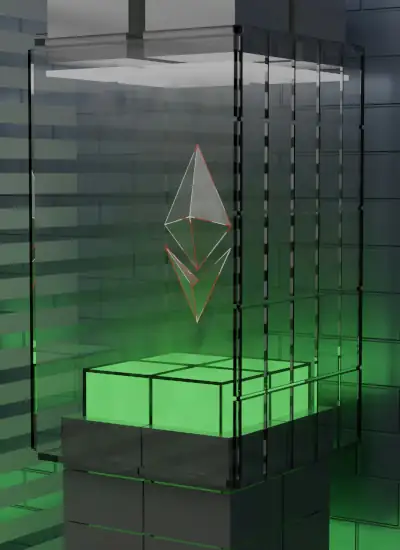
Unlock Your Business Potential with Certified Blockchain Consulting!
Dive into the future of technology with our team of certified blockchain experts. Simply pick the service you need:
Personalized Advice – tailored to your business needs.
Comprehensive Training – for you and your team.
Development Services – innovative solutions from the whitepaper to the finished blockchain.
Programming – with capabilities and tools to succeed.
TALK TO THE EXPERTS TODAYBlockchain Infrastructure Decoded
Let us decode what to consider when building a blockchain in just a few steps. For simplicity, We have used the terms blockchain and distributed ledger system interchangeably in this article.
Step 1: Identify a Suitable Use-case
There’s a ton of hype around blockchain. I’ve read that blockchains can erase global hunger, make the world corruption-free, end poverty, and do a lot more without breaking a sweat. Unfortunately, that’s not true. So, step 1 is to identify a use case that makes business sense.
global hunger, make the world corruption-free, end poverty, and do a lot more without breaking a sweat. Unfortunately, that’s not true. So, step 1 is to identify a use case that makes business sense.
There are 3 things that blockchains can do very well:
- Data Authentication & Verification: this includes immutable storage, digital signatures, and encryption. Data in almost any format can be stored in the blockchain. Blockchains can create public-private key pairs and also be used for generating and verifying digital signatures.
- Smart Asset Management: this includes issuance, payment, exchange, escrow, and retirement. A smart/crypto asset is the tokenized version of a real-world asset e.g. gold, silver, oil, land.
- Smart Contracts: This is a term most often misunderstood, but that’s something for another day.
Step 2: Identify the Most Suitable Consensus Mechanism
The original blockchain, which powers the bitcoin crypto-currency, used proof of work as a consensus mechanism.
But today, multiple distributed ledger systems offer a host of consensus mechanisms such as Proof of stake, Byzantine fault-tolerant, Deposit based consensus, Federated Byzantine Agreement, Proof of Elapsed Time, Derived PBFT, Redundant Byzantine Fault Tolerance, Simplified Byzantine Fault Tolerance, Federated consensus, Round-Robin and Delegated Proof of Stake.
Depending upon your use case, you need to choose the consensus mechanism that makes the most sense.
Step 3: Identify the Most Suitable Platform
There are many blockchain platforms out there today and most of them are free and open source. Depending upon the consensus mechanism you chose in step 2, you need to select the most suitable blockchain platform.
Some of the more popular platforms on the blockchain landscape, in alphabetical order, are:
- BigChainDB
- Chain Core
- Corda
- Credits
- Domus Tower Blockchain
- Elements Blockchain Platform
- EOS
- Eris:db
- Ethereum
- Hedera Hashgraph
- HydraChain
- Hyperledger Fabric
- Hyperledger Iroha
- Hyperledger Sawtooth Lake
- Klaytn
- Multichain
- Openchain
- Quorum
- Stellar
- Symbiont Assembly
- Tezos
- Tron
- XDC Network
Step 4: Designing the Nodes
Private blockchains or Blockchain solutions can be permissioned (e.g. a Government-run land registry) or permission-less (e.g. Bitcoin, where anyone can become a miner). Blockchain solutions can be private (e.g. a contract management system implemented in a pharmaceutical company), public (e.g. an asset-backed cryptocurrency), or hybrid (e.g. a group of banks running a shared KYC platform).
Another factor to consider at this stage is whether the nodes will run on the cloud, on-premise, or both. Then comes hardware configuration issues like processors, memory, and disk size. You also need to decide on the base operating systems (usually Ubuntu, CentOS, Debian, Fedora, Red Hat, or Windows). Laptop requirements for blockchain development are less critical.
Step 5: Design the Blockchain Instance
Most blockchain platforms need very carefully planned configuration for the following elements:
- Permission
- Asset Issuance
- Asset re-issuance
- Atomic Exchange
- Multi-Signature
- Key Management
- Parameters
- Native Asset
- Address Format
- Key Format
- Block Signature
- Hand-Shaking
Some parameters can be changed at run-time but some cannot, so this is a very crucial step.
Step 6: Building the APIs
Some blockchain platforms come with pre-made APIs while some don’t. The major categories of APIs that you would need are for:
- Generating key pairs and addresses
- Performing audit-related functions
- Data authentication through digital signatures and hashes
- Data storage and retrieval
- Smart-asset lifecycle management –issuance, payment, exchange, escrow and retirement
- Smart contracts
Step 7: Design the Admin and User Interface
At this stage, you would need to choose the front end and programming languages (e.g. HTML5, CSS, PHP, C#, Java, Javascript, Python, Ruby, Golang, Solidity, Angular JS Nodejs). You would also need to choose external databases (e.g. MySQL, MongoDB) as well as servers (including Web servers, FTP servers, mail servers).
Step 8: Adding Future Tech
You can greatly enhance the power of your Blockchain solution by integrating Artificial Intelligence, Biometrics, Bots, Cloud, Cognitive services, Containers, Data Analytics, Internet of Things, and Machine Learning.
Basic Blockchain Infrastructure Requirements
Distributed ledger technology or a Blockchain is not only a new type of software or database. That’s why a sophisticated and complete infrastructure is needed. In this part, we guide you through the software and hardware requirements.

Unlock the Code: Master Blockchain Programming!
Dive into the world of decentralized technology with our comprehensive online programming courses. Learn at your own pace and get:
Access – to expert instructors.
Interactive – coding exercises.
Vibrant – community of like-minded learners.
Certified – receive your recognized diploma.
ENROLL TODAY AND TRANSFORM YOUR FUTURE!Software Requirements for Blockchain
1. Solidity
Solidity is, undoubtedly, one of the most popular languages used by Blockchain Developers. Influenced by C++, Python, and JavaScript, it was designed to target the Ethereum Virtual Machine(EVM). Solidity is statically typed, supports inheritance, libraries, and complex user-defined types.
Solidity supports the OOP paradigm and CIS most commonly used for writing smart contracts. With Solidity, Blockchain Developers can write applications that can execute self-enforcing business logic embodied in smart contracts, thereby leaving a non-repudiable, and authoritative record of transactions. This comes in handy for creating contracts for voting, crowdfunding, multi-signature wallets, and blind auctions.
2. Geth
Geth is an Ethereum node implementation built using the Go programming language. It is available in the three interfaces, including JSON-RPC server, command-line, and an interactive console. Geth can be leveraged for Blockchain development on all three major operating systems – Windows, Mac, and Linux.
Geth is used for a host of different tasks on the Ethereum Blockchain, such as transferring tokens, mining ether tokens, creating smart contracts, and exploring block history. After installing Geth, you can either connect to an existing Blockchain or create your own. The good thing is that Geth simplifies things by automatically connecting to the Ethereum main net.
3. Mist
Mist is the official Ethereum wallet developed by the creators of Ethereum. When it comes to Ethereum, before you can start using the platform, you must have a designated place where you can store your Ether tokens and execute your smart contracts. It is available for Windows (both 32- and 64-bit), Mac, and Linux (32- and 64-bit).
While Mist is particularly suitable for deploying smart contracts, you must remember that it is a full node wallet – you have to download the entire Ethereum blockchain, which is larger than 1TB. Another critical thing to keep in mind is to remember your Mist password since you can never change it – it is a one-time setup ting.
4. Solc
Solc (Solidity Compiler) is a Solidity command-line compiler written in C++. Its primary purpose is to convert Solidity scripts into a more readable format for the Ethereum Virtual Machine. While Solidity is a slimmed-down, loosely-typed language with a syntax similar to JavaScript, the smart contracts written in it need to be converted to a format that can be easily read and decoded by the EVM. That’s where Solc comes into the scene.
There are two types of Solc – Solc (coded in C++) and Solc-js (it uses Emscripten to cross-compile from the Solc source code from C++ to JavaScript). Solc comes natively with most of the Ethereum nodes. It can be used for offline compiling, as well.
5. Remix
Remix IDE is a browser-based Blockchain tool used for the creation and deployment of smart contracts. Written in Javascript (so it can be accessed via any modern browser!), Remix can be used for writing, testing, debugging, and deploying smart contracts written in Solidity. It can be used either locally or in the browser. If you visit Remix’s website, you can see a ready-to-use screen:
Apart from having excellent documentation, Remix can seamlessly connect to the Ethereum blockchain through Metamask.
6. Metamask
Metamask is a wallet designed to function that acts as a bridge between Ethereum Blockchain and a browser (Chrome or Firefox). Essentially, it acts as a browser extension. Metamask offers a software platform that allows you to serve Ether and other ERC-20 assets while also letting you interact with Ethereum Dapps. The best part – you can do so right from your browser.
Metamask can be linked with Shapeshift and Coinbase to sell and buy ETH and ERC20 tokens. It can also save keys for ERC20 tokens and Ether. Since it can interact with different Ethereum test networks, it makes an ideal wallet for Blockchain Developers. Once you installed the app in your browser, you have a built-in Ethereum wallet ready to be used.
7. Truffle
Truffle is an Ethereum Blockchain framework designed to create a development environment for developing Ethereum-based apps. It comes equipped with a vast library that provides custom deployments for writing new smart contracts, developing complex Ethereum dApps, and helping tackle other challenging requirements of Blockchain development.
Truffle can perform automated contract testing using Chai and Mocha. It can also enable smart contract development, including linking, compilation, and deployment. Plus, it offers a configurable build pipeline for performing custom build procedures.
8. Ganache
Ganache is a Blockchain tool from the Truffle Suite that allows you to create your own private Ethereum blockchain to test dApps, execute commands, and inspect state while taking full control of the operation of the chain.
The greatest feature of Ganache is that it allows you to perform all the actions you would otherwise perform on the main chain, without incurring the cost for the same. Blockchain Developers use Ganache to test their smart contracts during development since it comes with many convenient options like advanced mining controls and a built-in block explorer.
9. Blockchain Testnet
When talking about Blockchain development, we cannot stress enough the importance of Blockchain Testnet. A Blockchain Testnet allows you to test dApps before making them live. Each blockchain solution has its unique Testnet, and it is highly recommended that you use the respective Testnet for the optimal result. There are three kinds of Blockchain Testnets – Public Test, Private Test, and GanacheCLI.
Testnets are extremely useful as it lets you test your dApps for bugs and errors without spending tons of cash or resources. For instance, Ethereum uses gas as the fuel for performing different operations. Spending on gas every time you need to do a test run can become a substantial financial burden. Thanks to Testnets, testing becomes feasible.
10. Blockchain-as-a-Service (BaaS)
Since it is not practical (or financially viable) for a company to implement a full end-to-end permissioned blockchain solution, it gave rise to the concept of BaaS. BaaS is modeled to function similarly to a SaaS model.
It lets you leverage cloud-based solutions to build, host, and use your custom-made Blockchain apps, smart contracts, and other interoperability functions on the Blockchain, with the cloud-based service provider handling and managing all the essential tasks/functions required to keep the Blockchain infrastructure operational and agile.
BaaS can be a convenient tool for individual entrepreneurs or companies who wish to adopt Blockchain tech but haven’t been able to do so due to operational overhead and technical complexities.
Today, there are many BaaS service providers such as Microsoft (Azure), Amazon (AWS Amplify), SAP, IBM, and other stakeholders, to name a few. These services are usually more expensive due to higher transaction costs.
Blockchain Hardware Requirements
Hardware that runs Blockchain Technology is often referred to as high-performance computers or HPCs. Financial Institutions (among many other businesses) depend on these powerful computers to perform a task at high speeds without errors or interruptions.
A business, in most cases, will contact a computer manufacturer and provide a set of specifications and requirements that need to be met for the computer to be selected to perform the desired functions, including for blockchain applications
These specs and reqs can be anything from processing power, memory, storage, plug-ins to environmental restrictions such as shock, vibration, temperature fluctuations, and humidity ranges.
All possible scenarios have to be accounted for.
Think about it, what happens if the cooling system in the server room fails? Suddenly, your powerful computers become overheated and could face catastrophic failures. Something a financial institution like VISA (which runs an average of 150 million transactions per day) cannot afford.
The Core Component of a High-Performance Computer
In today’s business/tech world, the focus is primarily set on CPUs (Central Processing Unit) aka Processors.
Think of a CPU as the brains of the system. It performs high-level tasks that manage the entire computer. A better CPU means greater performance which equals faster completion of assigned tasks. Simple.
For decades, this was the norm. Correction. It is still the norm today.
But blockchain technology is changing the way we think about processing power altogether, especially, when it comes to latency and real-time transactions.
Blockchain and GPUs
Graphics Processing Units, commonly known as Graphics Cards. A GPU is specialized for handling display functions of a computer, such as video rendering.
I’m sure you’re wondering how a display device benefits blockchain technology. To explain, let’s take another trip down memory lane.
In the old days of Cryptocurrency Mining (which is done on a DLT like blockchain), the processing of blockchain code was assigned to the CPU. Things were okay but turned sour rather quickly.
A CPU, although great at performing multiple high-level functions simultaneously, simply could not keep up with the demand of processing many streams of repetitive data at high speeds, such as executing blocks of code within a chain.
As the problem became more apparent, the big question was: “What can perform repetitive calculations faster than a CPU?” Answer: GPU.
A GPU is designed for high compute density, meaning more computations per second with one major caveat: the calculations cannot be too complex.
Let’s just say that, a CPU hires a GPU and offloads these tasks so it can focus on other important calculations a GPU simply cannot perform.
Nodes & Clients
Nodes are the core components of proof of stake infrastructure. A node is a computer that carries out the key functions of the network, such as validating transactions, storing records of the blockchain, storing blockchain data, or submitting votes on network governance. The software that dictates how these key functions are performed is a client.
A decentralized network can support multiple software implementations, or clients, dependent on the network’s design. Clients can be built to leverage a variety of programming languages and can exist in a variety of implementations. For example, the Ethereum network consists of mostly Geth and Parity nodes, while eth2 will support a larger variety of clients including Prysm, Lighthouse, Teku, Nimbus, and Lodestar.
There are a few basic types of nodes that make up proof of stake networks; each node type is optimized to perform specific tasks. These node types include:
- Participation nodes are the basic building block of proof of stake networks. They validate transactions and create blocks, and, in return for executing this work, earn block rewards. A set amount of value must be locked, or “staked,” to the node for it to become an active participant, or validator, on the network. Only once it is active can a node produce useful work on-chain in exchange for rewards.
- Read/write nodes can be used to verify transactions, obtain information about them (query), and write data such as transfers or smart contract interactions (transactions) to the chain.
- Sentry nodes, sometimes called proxy nodes, are nodes that stand between a participation node and the blockchain, allowing the participation node to complete its function while staying private and hidden from the public internet. The participation node only communicates with the blockchain through its sentry nodes—when they are being used. The sentry nodes function to protect the participation node from attacks by creating an extra barrier between the public internet and the participation node. For example, rather than executing a denial-of-service attack on a participation node, an attacker would have to first execute a denial-of-service attack on the adjoining sentry nodes, during which time the validator could spin up a new, un-attacked sentry node and continue operating unharmed.
- Relay nodes serve as hubs for the network’s peer-to-peer (or node to node) communication layer. They connect to a participation node and maintain connections to many other nodes to reduce transmission time by maintaining open, efficient communication paths.
Clusters
The term cluster is used to describe a network-specific node (or a collection of nodes) and its supporting infrastructure, such as load balancing tools, monitoring, and alerting services.
Clusters are often made up of:
- Load balancers distribute traffic across multiple servers to improve the responsiveness of a node. They ensure no single server bears an inordinate amount of network demand.
- Failover protection ensures a node does not experience extended downtime if the system it runs on goes out of commission. The form that failover protection takes may depend on whether a node is cloud- or hardware-based.
- Monitoring and alerting services ensure that nodes are healthy and participating optimally in the network. For example, monitoring the CPU use of a node shows us whether requests are processed effectively; a spike in CPU usage could be a sign of an attack or error in the code of a protocol update. Uptime is closely monitored to ensure all nodes are reliable, stable, connected to the protocol, and able to access data.
- Container services enable mass actions within a cluster. They allow applications and their packages to be pulled together into a form that can be version controlled. Two primary use cases include maintaining multiple clusters and supporting Blockchain Client APIs.
Blockchain Security Infrastructure
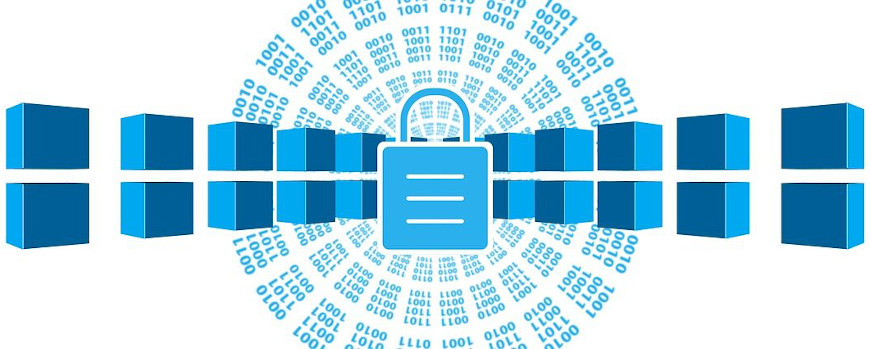
Other important, but more technical, aspects of underlying blockchain infrastructure include key management, networking firewalls, auditing, and other security considerations.
Security maintenance can be performed by deploying updates and patches to the code implementations powering a user’s blockchain infrastructure. Keeping up-to-date with the latest updates and releases helps to protect users from any vulnerabilities as they are found by protocol teams.
Participating in proof of stake blockchain networks requires a significant amount of technical expertise, time, resources, and resilient underlying technology—such as reliable and scalable hardware, updated software, and a stable internet connection to connect, communicate with, and participate in the blockchain network.
Infrastructure as a Service (IaaS)
Blockchain infrastructure providers (IaaS) establish and provide direct infrastructure access to customers, such as by operating data centers, building security features, and maintaining servers.
Platform as a Service (PaaS)
A blockchain infrastructure platform-as-a-service (PaaS) provider coordinates and maintains access to those amenities while also developing the code to build on them, the platform to access them, development tools, metrics and analytics, container services, and community support—all together providing a simple way to deploy and manage the infrastructure that powers blockchains bundled in with the underlying infrastructure needed to operate their systems.
It’s difficult to become proficient in building for the abundance of protocols leading the ecosystem today, due to their widely varying governance forms, algorithmic mechanisms, and application interfaces.
Some protocols require hands-on management and continuous engagement to keep their infrastructure functioning healthily. A blockchain infrastructure PaaS provider offers customers the ability to run secure infrastructure on multiple blockchains, without having to develop the technological capabilities in-house.
This service helps to close the gap between the blockchain networks, which can be complicated to build on and participate in, and the token holders and developers on those networks.
Optimize Participation: Hardware, Nodes, and Solutions
Just as the ability to buy electricity from the grid removed the need for factories to build and maintain their adjoining power plants, a blockchain infrastructure PaaS provider enables people to participate in blockchain networks without building and maintaining their hardware and code bases.
PaaS engineers can program blockchain infrastructure to customer specifications to save customers the time and resources required to set up their infrastructure, including executing custom custody needs, pool fees, delegation rates, and even custom cluster structures, such as the number of relay nodes connected to each validator node.
Being a blockchain infrastructure PaaS provider also entails developing API solutions to help customers integrate blockchain resources into their existing products and services.
For instance, the eth2 Validator Management API authorizes the secure and programmatic creation, management, and status review of eth2 validators and their underlying infrastructure, allowing users to easily generate Ethereum deposit contract transactions or scale validators.
Enterprise-Grade Security and Technical Support
As a blockchain infrastructure PaaS provider, Bison Trails monitors the health of and performs maintenance on, nodes and their supporting infrastructure. A 24/7 monitoring of customers’ clusters with a cascading flow of on-call engineers and dedicated customer support specialists should be provided.
Key metrics are monitored on an ongoing basis to ensure the underlying infrastructure is functioning as well as possible. Customers are promptly informed of issues experienced by their nodes. Security and uptime are especially needed on healthcare, supply chain, or IoT (internet of things) systems.
Another function of working as a blockchain infrastructure PaaS provider is to deploy updates and patches to those code implementations powering a user’s blockchain infrastructure. Updates and patches are deployed in a timely fashion to ensure that clusters are always operating on the most recent version, and the updates are executed in a way that ensures the node experiences the least amount of downtime possible.
Blockchain Nodes, Gateways, and Privacy
One issue in using hardware with cryptographic capabilities, such as the TPM, for implementing some features of blockchain gateways is the potential impact on privacy.
For example, in the case of the TPM hardware, the key used by a TPM to sign its attestations could be used by an external entity to correlate across different circumstances of usage of these attestations. This in turn could be used to track the platform containing that TPM.
To address this potential problem, the Trusted Computing Group (TCG) adopted the Direct Anonymous Attestations (DAA) approach based on the work of Camenisch and Lysyanskaya (2002), Brickell et al. (2004), and Brickell and Li (2012).
Generally, the purpose of the DAA scheme is to allow the TPM to issue attestations directly (e.g., to a verifying entity) without the need of a trusted third party, such as a privacy-supporting certification authority (called the Privacy CA). The goal is also to prevent the correlation or linking of keys across different usage instances.
The DAA was thus included in the TPM v1.2 specifications, and it has been carried over more recently into the TPM v2.0 specifications. Efforts are continuing to improve the DAA capabilities of the TPM.
Key Takeaways on Blockchain Infrastructure
- Blockchain infrastructures are components or systems that help to operate the running and functioning of blockchain technology.
- Nodes perform the key functions of validating blockchain transactions.
- CPUs and GPUs are used for high-level tasks. Nevertheless, GPUs have been proven to be more preferred due to their ability for it to read and process repetitive data faster or with high speed.
Learn Blockchain!
Book a Blockchain Training
Watch Blockchain Webinars
Take Blockchain Online Courses
Learn Cryptocurrency Trading
Become a Professional
Free Blockchain
News!
Get Blockchain news once a month.
On top, you’ll get our free blockchain beginners course right away to learn how this technology will change our lives.
FAQs
Is blockchain software or hardware?
Most blockchains are entirely open-source or public blockchain software found mostly in the financial services sector. This means that anyone and everyone can view its algorithm or code. This gives auditors the ability to review cryptocurrencies like Bitcoin for security.
Who makes hardware for blockchain?
1. Nvidia
Nvidia (NASDAQ: NVDA) is the leading manufacturer of graphics processing units (GPUs), which are essential components for blockchain systems as well as in such important technological areas as artificial intelligence, autonomous vehicles, and gaming.
GPUs are key hardware components of cryptocurrency mining. In a nutshell, “miners” use specialized GPUs to process transactions on the blockchain and are rewarded with newly minted digital coins. Although sales of Nvidia’s crypto-targeted CMP chips have cooled off a bit, they still generate more than $100 million in quarterly revenue for the company.
2. Bitmain
Bitmain Technologies Ltd. is a startup founded in 2013, is a privately owned company headquartered in Beijing, China that designs application-specific integrated circuit chips for bitcoin mining as well as other digital assets. Bitmain offers hardware and solutions, for blockchain and artificial intelligence (AI) applications.
3. Canaan
Canaan Inc. is a new technology bitcoin mining hardware manufacturer based in Hangzhou, China. The company was the second-largest designer and manufacturer of Bitcoin mining machines globally in terms of computing power in the six months ended June 30, 2019, according to independent market research firm Frost & Sullivan.



